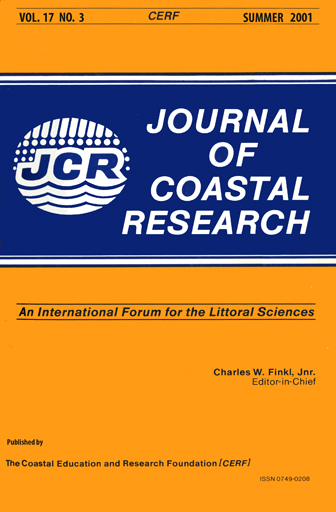Shoreline-Position Forecasting: Impact of Storms, Rate-Calculation Methodologies, and Temporal Scales
Keywords:
Shoreline change, erosion rate, coastal storms, end-point rate, linear-regression rate, error in prediction, hindcast.Abstract
Despite the considerable research that has sought to describe past and predict future shoreline change, little consensus has emerged on the best methodology for forecasting future shoreline positions. While a certain degree of heterogeneity in approach is warranted given the variability in coastal geomorphology and sediment-transport processes, the prediction error associated with each method has not been evaluated in great detail. In this study, measured shoreline positions from Delaware and New York were used to calculate long-term erosion rates and make predictions to subsequent, known positions. Rates were calculated using end-point and linear-regression methods, including and excluding storm-specific shorelines. Those rate computations that included storm-specific shorelines yielded consistently poor predictions (average factor-of-three increase in error) compared with non-storm erosion rates, regardless of rate-calculation method. Linear-regression predictions, on average, performed better than end-point rate predictions, reducing error by over 70% in New York and 34% in Delaware for rates including storm shorelines, and between 4 and 31% for non-storm data (DE and NY, respectively). Predictions (hindcasts) were also made to 19th century shoreline positions using rates computed with modern, non-storm data. The positions predicted along relatively undeveloped stretches of the coast were within the 95% confidence interval associated with the prediction. Hindcasts made in areas characterized by heavy development and/or beach nourishment projects were poor, as would be expected given the recent alteration of the natural sediment-supply system. For all locations, inclusion of 19th century data reduced uncertainty in forecasts of 21st century shoreline positions by roughly 44%. These results show that forecasts derived from linear-regression rates using non-storm, 19th and 20th century data produce the lowest prediction error and uncertainty in the long-term trend.


